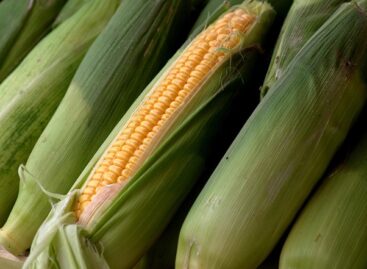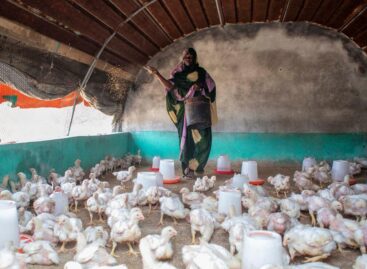FAO: Robust outlook for global cereal supplies in 2016
World cereal production in 2016 is set to amount to 2 521 million tonnes, just 0.2 percent off last year's large output and the third-highest global performance on record, according to FAO's first forecast for the new season, released today.
Large inventory levels and relatively sluggish global demand mean that market conditions for staple food grains appear stable for at least another season, the agency's latest Cereal Supply and Demand Brief predicts.
Food prices rise
The FAO Food Price Index for March was also released today. Overall, the Index rose by 1.0 percent compared to February, as soaring sugar prices and continued increase in palm oil quotations more than offset plunging dairy product prices.
The Index averaged 151.0 points in March, its highest level in 2016, but still some 12.0 percent below its level of a year earlier.
The FAO Food Price Index is a trade-weighted index tracking international market prices for five key commodity groups: major cereals, vegetable oils, dairy, meat and sugar. Its decline over the past year reflects ample food supplies, a slowing global economy and a stronger US dollar.
The keystone FAO Cereal Price Index fell slightly in March – marking the fifth straight month of decline- amid a favourable supply outlook in the new season. The drop was far more pronounced if compared to last year, as the sub-index is down 13.1 percent below its March 2015 level.
The FAO Sugar Price Index rose 17.1 percent from February, reaching its highest level since November 2014. The sharp increase reflects mainly expectations of a larger production deficit during the current crop year, but likely also reported higher use of raw sugar for the production of ethanol in Brazil.
The FAO Vegetable Oil Price Index also rose notably, jumping 6.3 percent from February, as international palm oil prices surged on the back of prolonged dry weather in Malaysia and Indonesia, by far the world main producers. Soy oil prices were stable, while sunflower and rapeseed oil prices declined.
The FAO Dairy Price Index dropped 8.2 percent to its lowest level since June 2009, led by plummeting butter and cheese prices. The FAO Meat Price Index was broadly unchanged from last month.
First harvest forecasts for the year ahead
The small decline in 2016/17 world cereal production portended by FAO would largely result from a lower worldwide wheat production, which is now expected to amount to 712.7 million tonnes, some 20 million tonnes less than in 2015. The decline mostly reflects smaller plantings in the Russian Federation and Ukraine, both affected by dry weather.
Global output of coarse grains is projected at 1 313 million tonnes, up about 11 million tonnes from 2015, with expected increases in maize production more than offsetting declines for barley and sorghum.
Maize output is seen growing by 1.1 percent to 1 014 million tonnes, driven by recovering yields in the European Union and expanding plantings in the United States. At the same time, maize production is expected to fall in Southern Africa and Brazil, due to drought and adverse growing conditions associated with El Niño.
World rice production is predicted to recover with a return to normal weather conditions in northern-hemisphere Asia, where erratic rains have affected planting activity for the past two seasons. Global output, although impacted by unattractive prices, is predicted to rise 1.0 percent to 495 million tonnes.
International trade in cereals in 2016/17, however, is poised to decline for the second consecutive season – by 1.4 percent to 365 million tonnes – due to ample stockpiles and modest demand growth in many importing countries.
Global cereal utilization in 2016/17 is foreseen to grow only modestly, rising by around 1.0 percent to 2 547 million tonnes, according to very preliminary new estimates.
As utilization is anticipated to exceed production, cereal reserves would need to be drawn down to fill the gap. FAO's first forecast for world cereal stocks at the close of seasons ending in 2017 points to a likely 3.9 percent annual decline to 611 million tonnes. However, the resulting world cereal stock-to-utilization ratio would still approach 23 percent, well above the historical low of 20.5 percent registered in the 2007/2008 season.
Related news
China would increase its grain production capacity by 50 million tons
🎧 Hallgasd a cikket: Lejátszás Szünet Folytatás Leállítás Nyelv: Auto…
Read more >FAO: International food prices have been declining since September
🎧 Hallgasd a cikket: Lejátszás Szünet Folytatás Leállítás Nyelv: Auto…
Read more >FAO-Ministry of Agriculture Scholarship Program Continues
🎧 Hallgasd a cikket: Lejátszás Szünet Folytatás Leállítás Nyelv: Auto…
Read more >Related news
New Year’s Eve: shortened opening hours in stores – general store closure on January 1
🎧 Hallgasd a cikket: Lejátszás Szünet Folytatás Leállítás Nyelv: Auto…
Read more >Tejföl is only a name for live flora: new categories for sour dairy products will be introduced from 2026
🎧 Hallgasd a cikket: Lejátszás Szünet Folytatás Leállítás Nyelv: Auto…
Read more >Sausage prices before New Year’s Eve: cheap entry, expensive premium – how big is the gap on the shelves?
🎧 Hallgasd a cikket: Lejátszás Szünet Folytatás Leállítás Nyelv: Auto…
Read more >






